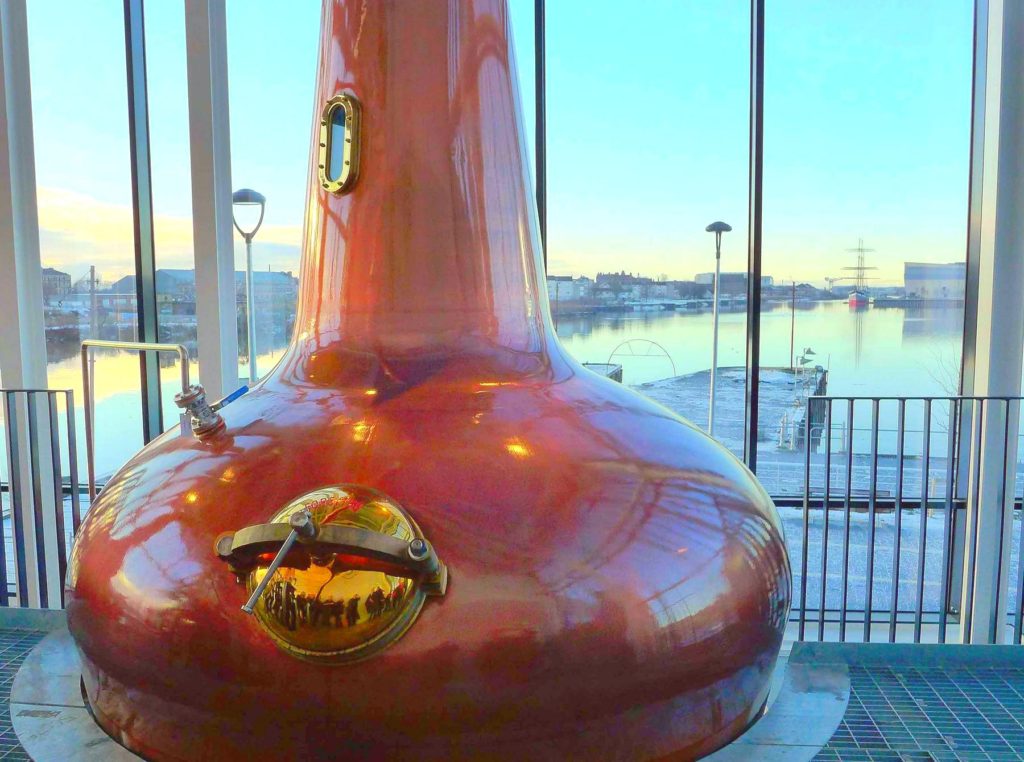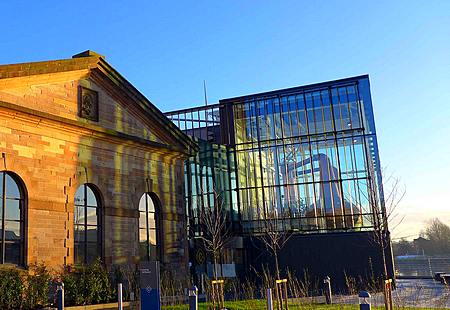
Glasgow’s Clydeside Distillery began operation late last fall and opened to tours just after Christmas. The attraction was so new when I visited in late January that my taxi driver didn’t know how to find it. But once I finally arrived, it turned out to be worth the effort.
 Nearly a century after Glasgow’s last old-time whisky maker closed, the Clydeside is the second new whisky distillery to open in the last year. It sits at the site of the Old Pump House at Queen’s Dock (100 Stobcross Road, Glasgow, 0 141-212-1401, theclydeside.com, tours £15). The River Clyde provides the best protected deepwater ocean port in the west of Scotland. The world’s goods flowed into the United Kingdom here—and fine Scotch whisky flowed out around the globe. The pumphouse was constructed in 1897 by John Morrison—great grandfather of Tim Morrison, the man behind Morrison Glasgow Distillers and the Clydeside. The picturesque riverside location puts the distillery and tasting room right next to the striking Riverside Museum (a transport museum) and Glasgow’s resident tall ship, Glenlee.
Nearly a century after Glasgow’s last old-time whisky maker closed, the Clydeside is the second new whisky distillery to open in the last year. It sits at the site of the Old Pump House at Queen’s Dock (100 Stobcross Road, Glasgow, 0 141-212-1401, theclydeside.com, tours £15). The River Clyde provides the best protected deepwater ocean port in the west of Scotland. The world’s goods flowed into the United Kingdom here—and fine Scotch whisky flowed out around the globe. The pumphouse was constructed in 1897 by John Morrison—great grandfather of Tim Morrison, the man behind Morrison Glasgow Distillers and the Clydeside. The picturesque riverside location puts the distillery and tasting room right next to the striking Riverside Museum (a transport museum) and Glasgow’s resident tall ship, Glenlee.
This single malt distillery employs a handsome copper alembic shown at the top of the post. Since whisky must be aged a minimum of three years in wood before it can be called Scotch, none of the Clydeside’s production is available for sale … yet. While that early production is laid down in a mixture of former sherry casks and new European oak barrels, the first tastes are still four to five years in the future.
Tour elucidates whisky industry in Glasgow
But the tour—and tasting of other characteristic whiskies—made my visit worthwhile. I know bourbon and Irish whiskeys better than Scotch, so it proved an educational opportunity. Visitors start by wending through a maze of wall panels with occasional artifacts from Glasgow or distilling history. This self-guided part of the tour is jammed with facts about the birth of the whisky industry and how it paralleled the development of the city.
A guide leads the second part of the tour, which navigates the small distillery itself from malty aromas of the mash tuns to the odorless alembic still. The glass walls of the facility give a distinct ambience to the journey, emphasizing the sense of place that’s always been part of the whisky ethos.
 The final portion of the tour might be the best—a sampling of “Three Wee Drams.” It’s a chance to try some different styles with guidance from an expert guide. Since my tour included a group of whisky professionals from around Scotland, we got to sample several drams and I was surprised how much I learned. The Scots were particularly impressed with some of the peatier, smokier sips that seemed too sooty to me. Likewise, they were very taken with the heavy oak notes of some Scotches aged in new American oak, while I thought they were the analogs of of overoaked California Chardonnay.
The final portion of the tour might be the best—a sampling of “Three Wee Drams.” It’s a chance to try some different styles with guidance from an expert guide. Since my tour included a group of whisky professionals from around Scotland, we got to sample several drams and I was surprised how much I learned. The Scots were particularly impressed with some of the peatier, smokier sips that seemed too sooty to me. Likewise, they were very taken with the heavy oak notes of some Scotches aged in new American oak, while I thought they were the analogs of of overoaked California Chardonnay.
But even better that discovering what I didn’t like, I discovered what appealed to me: The Macallan Gold, a Speyside single malt aged in a mix of sherry oak casks for nine to 15 years. (Macallan no longer posts an age on their bottlings—just a color with the assumption that the darker the color, the older the whisky.) Now I know what I’ll be sipping during the long wait for a Clydeside tipple.
